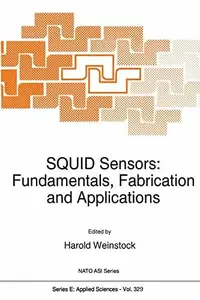
Free Download SQUID Sensors: Fundamentals, Fabrication and Applications By John Clarke (auth.), Harold Weinstock (eds.)
1996 | 703 Pages | ISBN: 9401063931 | PDF | 56 MB
This book willbcof value to anyone who wishes to consider the use of SQUID-based magnetic sensing for anyone of a number of practical applications. The focus here is to examine in detail how SQUID technology is used and how. the results of the measurements obtained can be interpreted to provide useful information in a variety of real-world applications. The concentration is on those areas that have received the most attention, namely bioma~etism and nondestructive evaluation, but. the topics chosen include as well, geophysics, underwater ordnance detection, accelerometry and a few somewhat more exotic applications. To provide a reasonable perspective. an attempt has been made to consider competing technologies for most applications, and in some cases to consider how SQUID-based technology may be integrated with other technologies to provide an optimum total-system configuration. It is also the intention of the editor, that this book will be of major value to those scientists and engineers who will be required to build both the essential components and complete cryogenic SQUID systems which will be utilized in the various applications presented. Thus, there is a comprehensive review of the principles of SQUID operation, and a detailed exposition on the fabrication of high-temperature-superconducting (HTS) SQUIDs. Although the market is currently dominated by low-temperature superconducting (L TS) SQUIDs, it is reasonably certain that in the near future HTS SQUIDs will take over in most situations.
